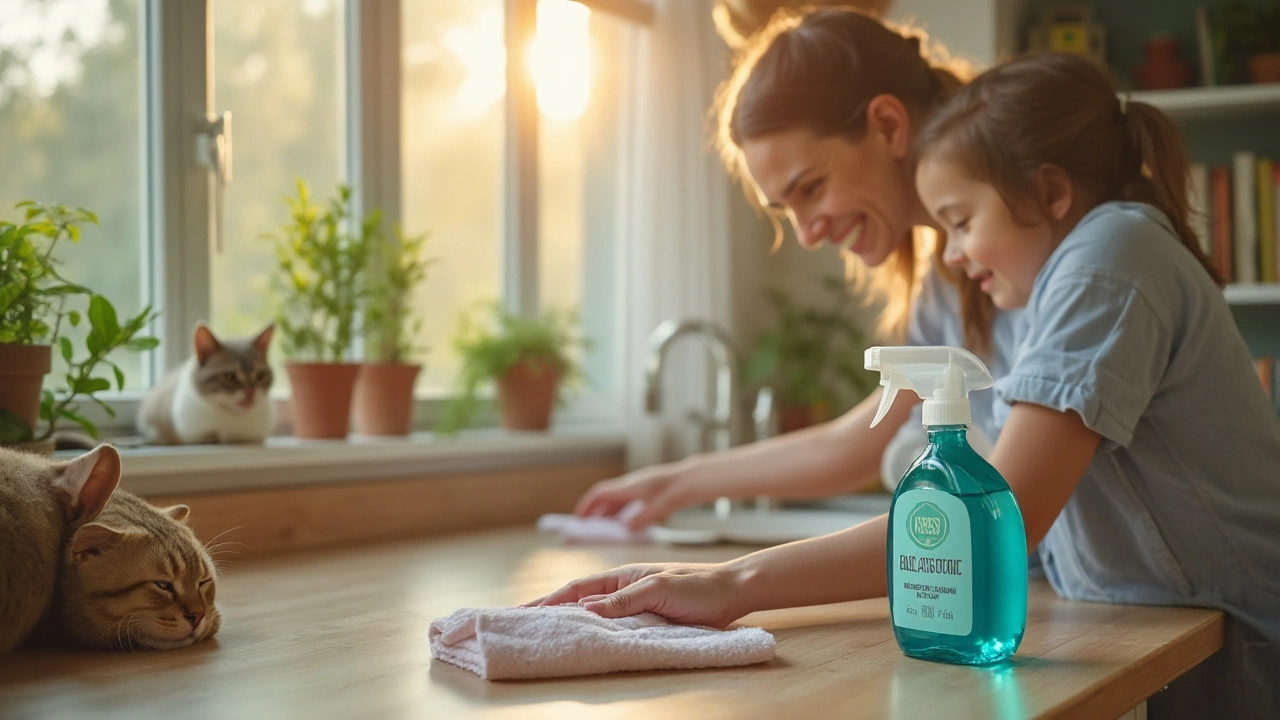Effective Non‑Toxic Cleaning: Safe Solutions for Every Home
Want a sparkling home without breathing harsh chemicals? You can get great results with everyday, harmless ingredients. This guide walks you through the simplest, most effective non‑toxic tricks that actually work on windows, ovens, carpets, and more.
Everyday Ingredients That Pack a Punch
White vinegar is the ultimate all‑rounder. Mix one part vinegar with one part water to wipe down glass, tile, and countertops. The acidity cuts grease and leaves a streak‑free shine, making it perfect for the "Best Way to Clean Windows" method.
Baking soda works like a gentle abrasive. Sprinkle it on stubborn stains, let it sit for 10‑15 minutes, then scrub with a damp cloth. It’s brilliant for baked‑on oven grime and for freshening up carpets.
Lemon juice adds a fresh scent while its natural citric acid breaks down mineral deposits. Use it on copper pots, cutting boards, or even to brighten grout lines.
Castile soap (unscented or lightly scented) creates a mild, biodegradable cleaning solution. Dilute a tablespoon in a bucket of warm water for floors, walls, and even upholstery.
When you need a little extra disinfecting power, a spray of 3% hydrogen peroxide does the trick on kitchen counters, bathroom tiles, and high‑touch surfaces. Let it bubble for a minute, then wipe clean.
How to Clean Specific Areas Without Harsh Chemicals
Windows and mirrors: Fill a spray bottle with half water, half vinegar, and a drop of dish soap. Spray, wipe with a microfiber cloth, and watch the streaks disappear. The same mix works on shower doors for a spotless finish.
Ovens: Sprinkle baking soda over the interior, spray with a little water to form a paste, and let it sit overnight. In the morning, scrub with a non‑scratch pad and wipe clean. No need for pricey oven‑specific cleaners.
Carpets and rugs: Sprinkle baking soda over the area, let it absorb odors for 30 minutes, then vacuum. For stains, dab a mixture of vinegar and water (1:2) onto the spot, blot, and repeat until the stain lifts.Upholstery: Mix a cup of warm water, a tablespoon of castile soap, and a few drops of lavender essential oil. Lightly spray the fabric, blot with a clean cloth, and let it air dry. This keeps sofas fresh without the chemicals found in many commercial products.
Bathroom fixtures: Combine equal parts vinegar and water in a spray bottle. Apply to taps, showerheads, and tiles. The acid removes limescale, while the solution is safe for chrome and porcelain.
All these recipes are cheap, easy to find, and safe around kids and pets. By swapping out store‑bought cleaners for these DIY mixes, you lower your carbon footprint and avoid the hidden toxins that often lurk in “green” labels.
Remember, the key to effective non‑toxic cleaning is consistency. A quick wipe with a vinegar‑water spray after each use keeps grime at bay, meaning you’ll spend less time scrubbing later. Pair these habits with the right tools—micro‑fiber cloths, soft‑bristle brushes, and a good bucket—and you’ll have a spotless home that’s truly healthy.

Do Non-Toxic Cleaners Really Work? Discover Eco-Friendly Solutions
Non-toxic cleaners have emerged as an effective alternative to traditional chemical-laden products. These cleaners promise a safer environment for homes, especially for families with young children and pets. Questions often arise about their efficacy and advantages, particularly in comparison to conventional products. This article delves into the ingredients, uses, and benefits of non-toxic cleaners, while also dispelling common myths.
Read More